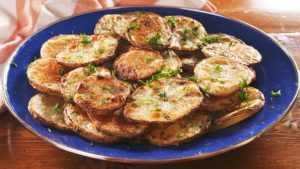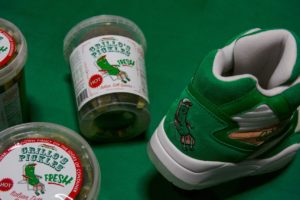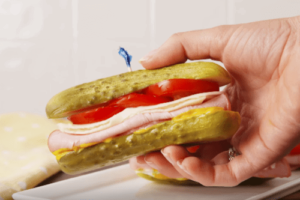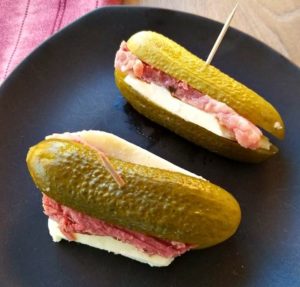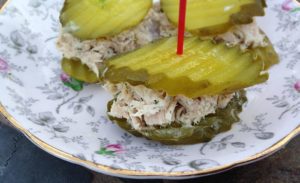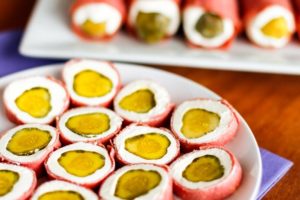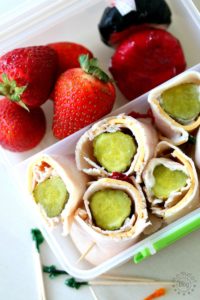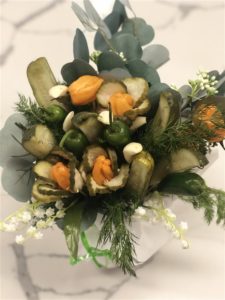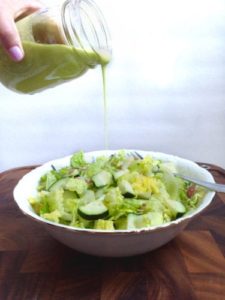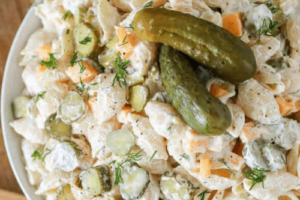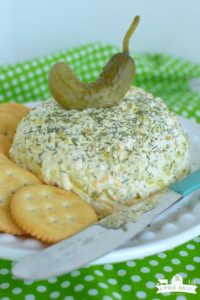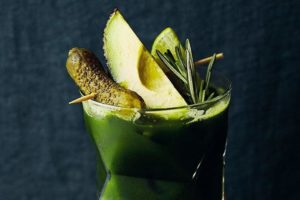45,000 and growing. Pickle Parade in Mansfield sweet success with legion of fans
By:By Nicholas Sakelaris
(photo By: Nicholas Sakelaris Special to the Star-Telegram )
It’s a pickle that looks like a rocket. Or a rocket that looks like a pickle. Either way, this dill garnered a lot of attention in the Pickle Parade.
The Pickle Queens were barely finished throwing their beads to finish the 8th annual World’s Only St. Paddy’s Pickle Parade & Palooza and people were already clamoring to be part of next year’s parade.
John Pressley, president of the Pickled Mansfield Society, said they averaged 45,000 people over the two-day event March 15-16 and the exposure has more people wanting to get involved.
Construction on South Main Street did change this year’s the parade route and limited this year’s event to 75 floats. But next year, the construction will be a distant memory and they’ll be able to accommodate 100 floats again, Pressley said.
“There are vendors and parade entries already applying,” Pressley said. “It will be beautiful next year when they get it finished.”
When complete, the new South Main Street in front of The LOT Downtown and Twisted Root will have room for food vendors on both sides while leaving room for the parade to go down the middle, Pressley said.
There was a late entry to this year’s parade, as the Timberview boys basketball team won the school’s second Class 5A state championship in three years on March 9.
“If you win a championship, they usually throw a parade for them,” Pressley said. “We were actually able to get Timberview’s basketball team into the parade just like the pros.”
The team rode in the back of a white pickup truck and soaked in all the cheering from the crowd.
The second annual beer keg races on Friday night had more entries this year and they got to show off their driving skills in the parade on Saturday.
“It turned out to be a huge success, everyone had a magnificent time watching the homemade golf carts with kegs on them racing up and down main street,” Pressley said.
The baby parade was four times bigger than last year.
Russell LaBouve and his 7-month-old daughter, Cade, won the grand prize for the baby parade with their moon rover float. Building the converted wagon meant many sleepless nights for the LaBouves, who traveled from Louisiana for the parade.
Being from Mardi Gras country, they’re serious about their floats. LaBouve is a welder by trade so he originally envisioned a moon lander with legs but the project evolved.
“Let’s turn it into a rover if we can, put some wheels on it, put some fake solar panels, i call them our ‘fauxler panels,” LaBouve said.
He bolted her high chair to the wagon and attached wood and then painted it to look like a rover.
The new cornhole tournament on Friday was also “received tremendously,” Pressley said.


